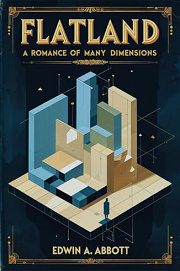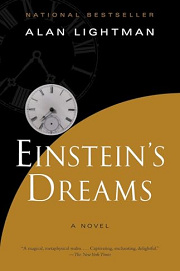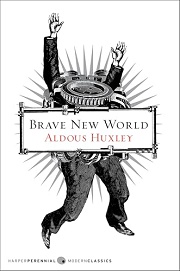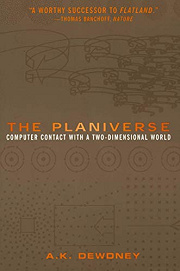Share your thoughts in a quick Shelf Talk!
Flatland by Edwin A. Abbott
A curious inhabitant of a two-dimensional world has his mind blown by the discovery of higher dimensions. Playful, profound, and enduringly imaginative, Flatland turns geometry into an adventure—and a sly critique of society.
Have you read this book? Share what you liked (or didn’t), and we’ll use your answers to recommend your next favorite read!
Love Flatland but not sure what to read next?
These picks are popular with readers who enjoyed this book. Complete a quick Shelf Talk to get recommendations made just for you! Warning: possible spoilers for Flatland below.
In Flatland, did you enjoy ...
... absurdist social satire that pokes fun at everyday logic through impossible worlds and straight-faced explanations?
The Hitchhiker's Guide to the Galaxy by Douglas Adams
If you loved how A. Square’s matter-of-fact geometry lessons slyly lampoon Victorian norms—and how his encounter with the Sphere turns rigid “common sense” on its head—then you’ll click with the deadpan cosmic silliness of The Hitchhiker’s Guide to the Galaxy. Adams uses mock-serious explanations (from the Babel fish to hyperspace bypasses) the same way Abbott uses angle-measuring and house entrances for women: to expose the absurdity hidden inside familiar rules, and to make you laugh while you’re rethinking them.
... a travelogue of invented lands used as pointed social allegory?
Gulliver's Travels by Jonathan Swift
Like A. Square’s tours of Lineland, Flatland, and Spaceland—each realm reflecting human folly—Gulliver’s Travels sends Lemuel Gulliver through Lilliput, Brobdingnag, and beyond to mirror back our politics, prejudice, and pride. Where Abbott turns polygons and angles into symbols of status and dogma, Swift turns tiny courtiers and giant philosophers into scalpel-sharp allegories, letting you enjoy the voyage even as the satire cuts deep.
... thought-experiment vignettes that turn physics into meditations on perception and reality?
Einstein's Dreams by Alan Lightman
If the mind-stretching leap from Flatland to Spaceland—and A. Square’s struggle to imagine the third dimension—hooked you, Einstein’s Dreams offers a suite of elegant “what if” worlds where time behaves differently in each vignette. Much as the Sphere’s lessons force A. Square to question reality, Lightman’s variations (time as place, time that repeats, time that stands still) invite you to sit with the philosophical implications rather than the mechanics, and feel the wonder and ache of new perspectives.
... a rigidly stratified caste system used to critique conformity and control?
Brave New World by Aldous Huxley
Flatland’s hierarchy—lines, triangles, polygons, and the priestly Circles—maps neatly onto the Alpha-to-Epsilon caste world of Brave New World. If the way Abbott uses angles, houses, and “irregulars” to expose social prejudice fascinated you, Huxley’s hatcheries, conditioning, and soma show another chillingly ordered society where questioning the system (as with A. Square’s heresy and imprisonment) carries a heavy price.
... rigorous, playful exploration of what life and technology would be like in two dimensions?
The Planiverse by A. K. Dewdney
If A. Square’s earnest geometry—and the shock of the Sphere’s visit—sparked your awe for dimensional thinking, The Planiverse is a delight. Dewdney follows Yendred, a two-dimensional inhabitant, and works out everything from 2D biology to engineering with the same lucid, curiosity-driven spirit that powers Abbott’s explanations. You’ll get that same aha! feeling as impossible-seeming problems (doors, digestion, machines) are solved with beautifully consistent 2D logic.
Unlock your personalized book recommendations! Just take a quick Shelf Talk for Flatland by Edwin A. Abbott. It’s only a few questions and takes less than a minute.





